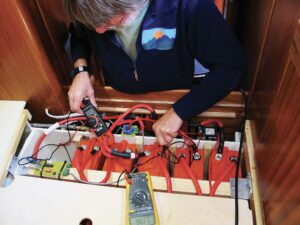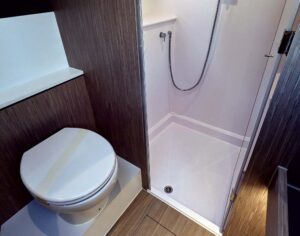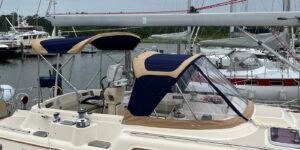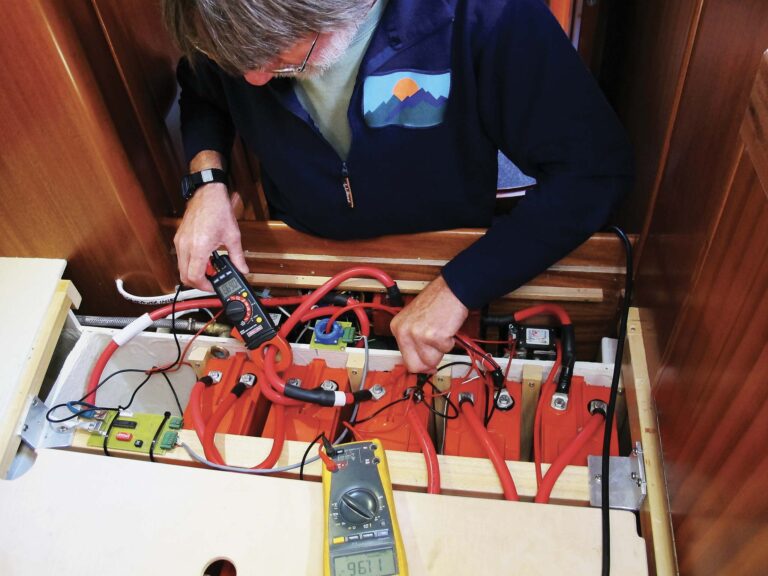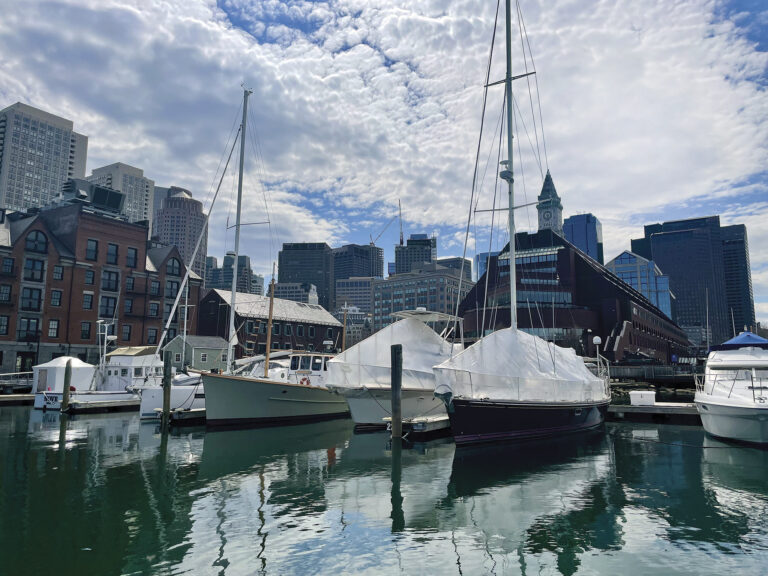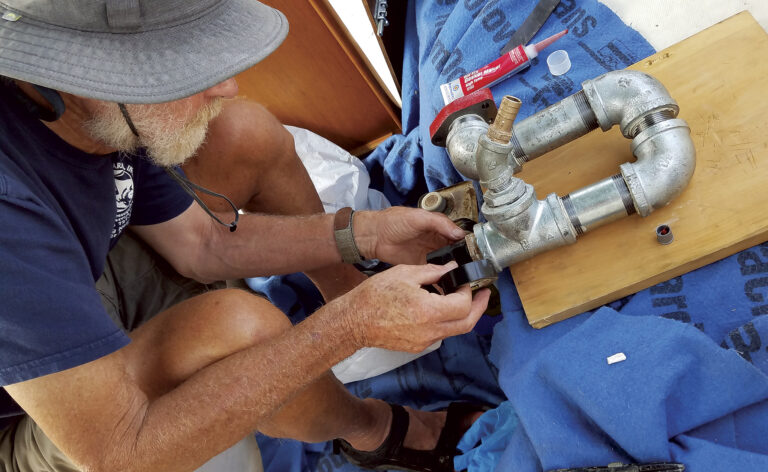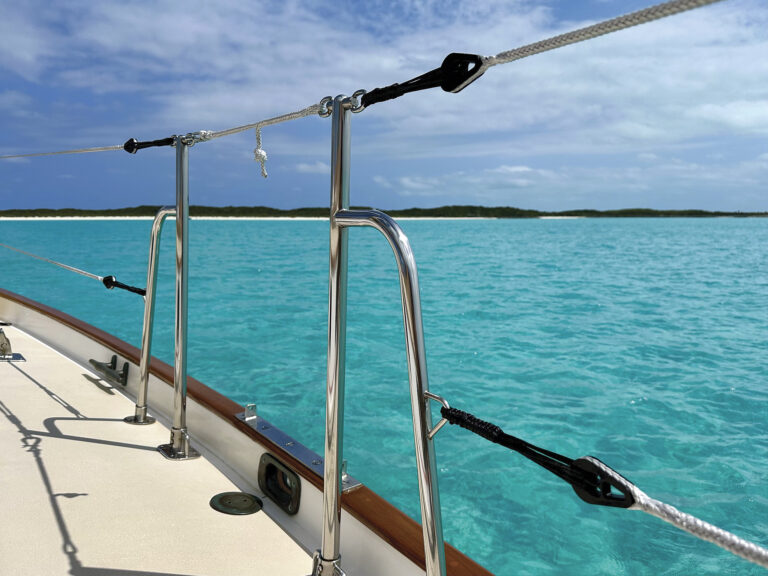Steve Karas of Spring Grove, Pennsylvania, asks:
“My 1985 Catalina 27 is in good shape except for some tiny spider cracks in the foredeck gelcoat. The previous owner tried to repair the cracks by drizzling loose gelcoat into them, but the repaired deck looks worse than it did before.
I had to sand it all down—losing the non-slip prism deck pattern in the process—and then I covered the surface with Treadmaster. The Treadmaster has worked well, of course, but now some other areas are beginning to show the same spider cracks. This time I would like to repair the surface without destroying the factory anti-skid surface or having to use Treadmaster. Is there a caulking product or a gel-like paint I can use to repair these hairline cracks? The factory gelcoat is a flat gray.”
Don Casey replies:
In most cases gelcoat resin is not a good choice for repairing hairline cracks because it is too thick to reach the bottom of the crack. Often the gelcoat just bridges the crack and leaves a hollow void underneath. If you want to repair a crack with gelcoat resin you need to open up the crack so it forms a shallow V that can accept the thick resin. This solution works best when there are just a few impact or flex cracks, but it’s not practical when a surface is badly crazed.
A two-part epoxy primer is the best thing to use on a crazed surface. Because it’s much thinner than gelcoat, the epoxy wicks into the cracks, attaches tenaciously to both sides and fills the entire void completely. Unfortunately, because it is a primer, you also have to cover the primer with paint. And applying paint over a molded deck pattern inevitably impairs its anti-skid properties.
If you want to retain the molded anti-skid surface, one or two thin coats of epoxy primer should take care of the cracks. If you want better footing, lightly sprinkle grit of some type over the first primer coat. Gently sweep away any grit that doesn’t adhere to the primer and use the second coat to encapsulate the grit that remains.
Then follow up with two coats of a milk-thin two-part urethane paint. You should wind up with a crack-free deck whose existing anti-skid characteristics have been only slightly compromised.

